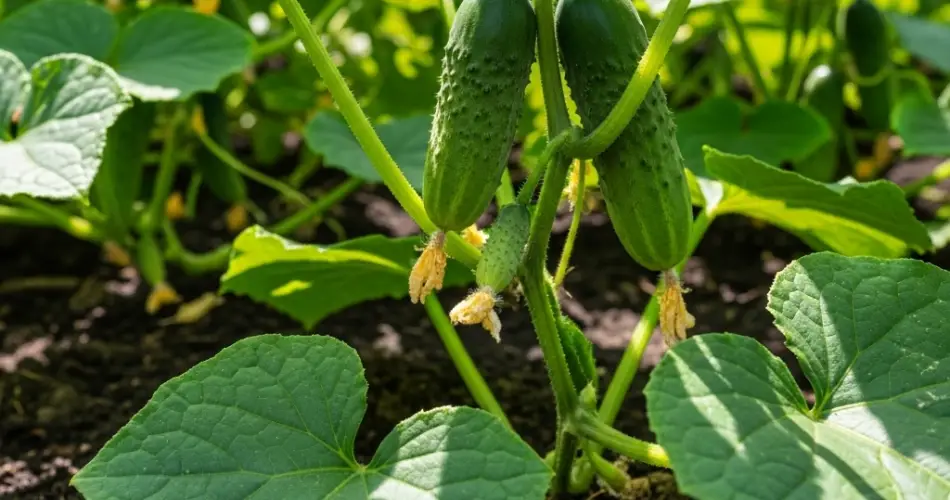When plants start to show signs of distress — yellowing leaves, black spots, powdery growth, or withered stems — it’s often due to a fungal infection. Fungal diseases can devastate a home garden quickly if not addressed early, but before you reach for chemical sprays, there’s a remarkably simple, natural solution already in your kitchen. This homemade mixture, using just baking soda and olive oil, has been hailed by gardeners as one of the strongest and safest fungicides you can make at home.
This gentle but effective remedy has been used for generations and is praised for its ability to stop the progression of fungal infections and even reverse visible damage. With just one drop per application site, you can begin to restore your plants to full health, often within a matter of days.
Understanding Plant Fungal Infections
Fungi are one of the most common plant pathogens. They thrive in warm, moist environments and spread quickly through spores, especially in crowded beds or during rainy periods. Common fungal diseases include:
-
Powdery mildew
-
Black spot (especially on roses)
-
Rust
-
Downy mildew
-
Leaf spot
Once these infections take hold, they can stunt growth, reduce flowering and fruiting, and in severe cases, kill the plant.
Why Baking Soda and Olive Oil Work
The beauty of this homemade treatment lies in the unique properties of its two simple ingredients:
-
Baking soda (sodium bicarbonate): Acts as a pH adjuster on the leaf surface. Most fungi prefer slightly acidic environments, and baking soda alters this environment to make it hostile for fungal growth. It also has mild antiseptic properties, helping to prevent further spread.
-
Olive oil: While primarily used as a carrier, olive oil also helps the solution stick to plant surfaces and enhances its effectiveness by smothering fungal spores. The slight oily film creates a barrier that slows fungal activity and limits the spread of the disease.
Together, they create a powerful, non-toxic fungicide that is gentle on plants and safe for pets, pollinators, and people.
The Recipe: Natural Fungicide Spray
Ingredients:
-
1 liter of lukewarm water
-
1 tablespoon of baking soda
-
1 teaspoon of olive oil
-
Optional: a few drops of liquid natural soap (to help emulsify the mixture)
Instructions:
-
Mix thoroughly: In a spray bottle or container, combine the water, baking soda, olive oil, and (if used) a couple of drops of natural liquid soap. Shake or stir well to ensure the ingredients are fully blended.
-
Application: Spray the mixture directly onto the leaves of infected plants, especially the undersides where fungal spores tend to hide. One or two sprays per leaf is sufficient — a little goes a long way.
-
Frequency: For active infections, apply once every 5–7 days until symptoms subside. For prevention, spray every two weeks during the growing season.
-
Precautions: Avoid using this spray during the hottest part of the day or in direct sunlight, as the oil component can intensify sunlight and burn the leaves. Early morning or late afternoon applications are ideal.
Real Results in Just a Few Applications
Gardeners who have used this method report noticeable improvements after the first couple of treatments. Powdery mildew begins to fade, leaf spots stop spreading, and new growth emerges healthier and stronger. It’s not just about killing the fungus — this spray helps create an environment that supports recovery and resilience.
The formula can be used on a wide range of plants, including:
-
Roses
-
Cucumbers
-
Zucchini
-
Tomatoes
-
Peppers
-
Ornamental flowers
-
Indoor houseplants (with proper testing on one leaf first)
Complementary Plant Care Tips
For best results, combine this treatment with overall healthy plant care practices:
-
Ensure proper air circulation around plants by pruning and spacing.
-
Water early in the day to give leaves time to dry before nightfall.
-
Remove affected leaves and dispose of them (do not compost).
-
Rotate crops in your vegetable garden to reduce fungal buildup in the soil.
A Drop of Prevention and Cure
This simple formula proves that powerful garden solutions don’t need to come in plastic bottles or carry warning labels. With just a drop or two of a mixture made from pantry staples, you can take control of fungal issues and help your plants thrive naturally.
It’s an ideal solution for organic gardeners, beginners looking for natural options, and anyone hoping to reduce their reliance on synthetic chemicals in the garden. Give it a try and watch your green space bounce back with vigor.



